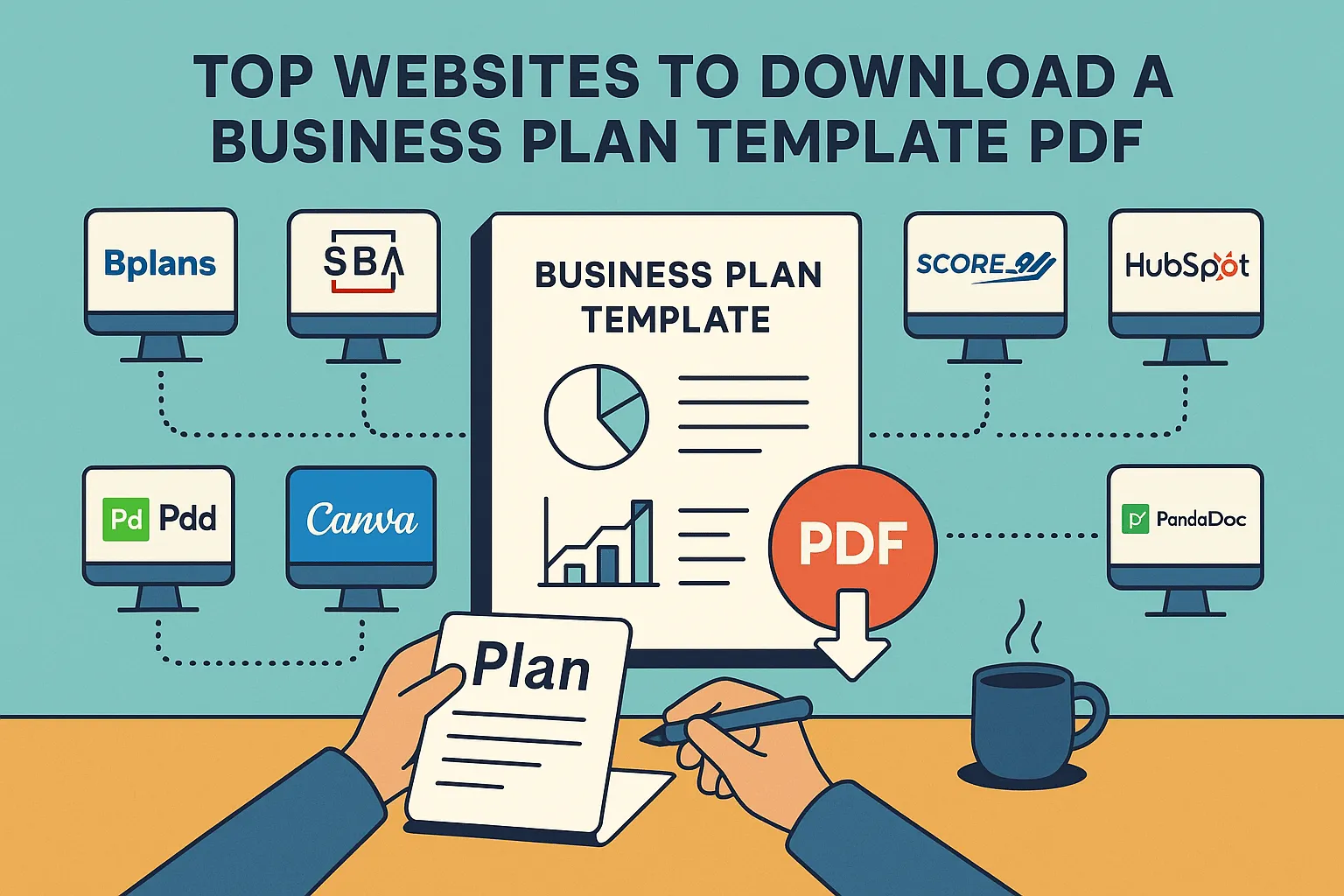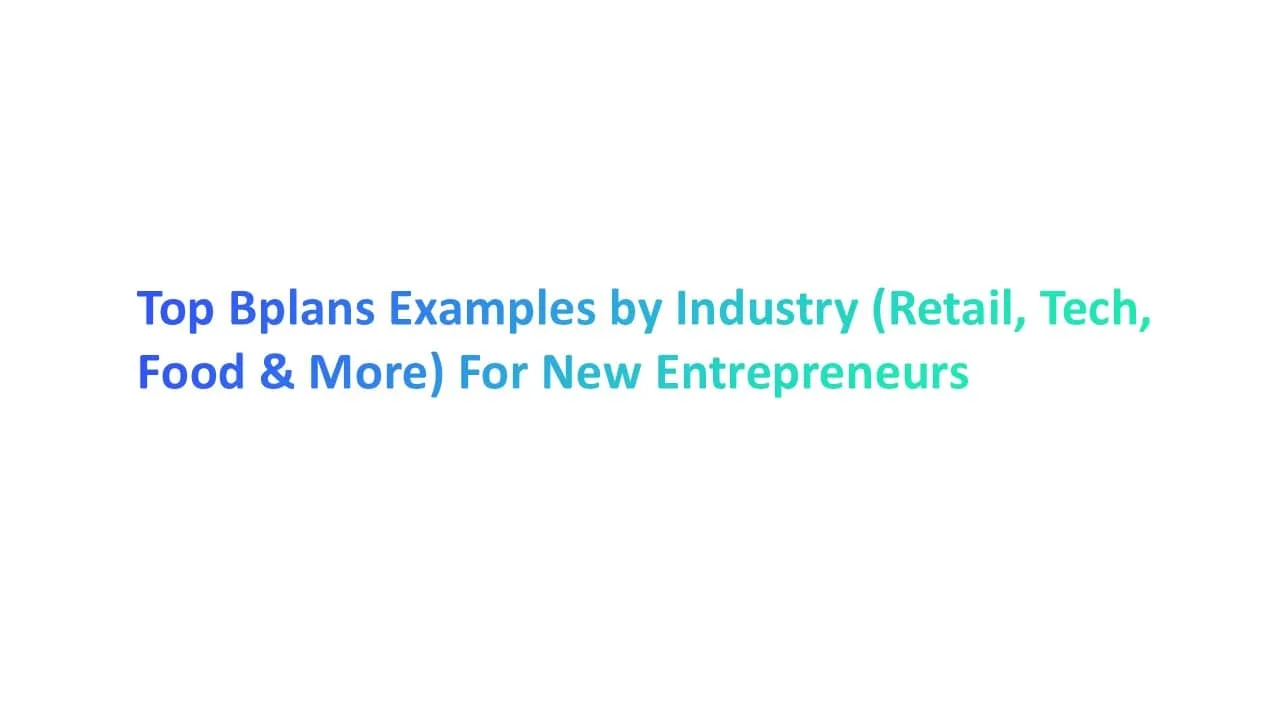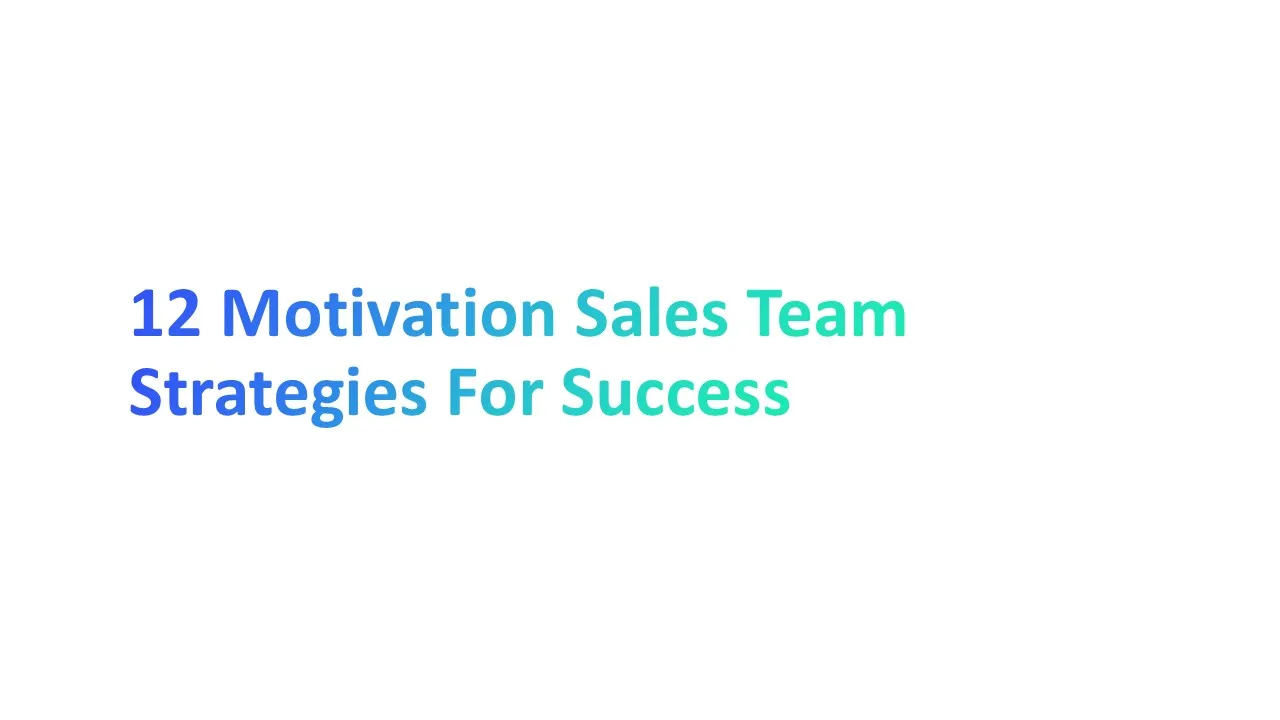Thinking about writing a business plan but don’t know where to start? According to the U.S. Bureau of Labor Statistics, 1 in 5 new businesses fail within the first year—and a weak or missing business plan is often the reason.
But here’s the good news: you don’t have to reinvent the wheel. In this guide, you’ll find the best bplans examples by industry, along with an outline from retail to tech to food. Ready to skip the guesswork and start smart? Let’s dive in.
What Is a Good Business Plan and Why It Matters

A good business plan is like your business’s roadmap. It explains what your business does, provides details on who it serves, and how it makes money. Whether you're starting a new business or growing a small business, a plan helps you stay focused and attract investors.
According to the Harvard Business Review, companies with clear business plans grow 30% faster. If you're unsure where to start with your business idea , check out real bplans examples to see how others did it right.
Retail Business Plan Example

If you’re starting a store, you need a clear retail business plan. It helps you stay focused, set goals, and get funding. Good bplans examples and simple business plan templates show what works—and what doesn’t. Here’s a simple breakdown of what a retail plan should include.
1. Executive Summary and Company Overview
- Write a short summary of what your business does. Add your mission statement, store name, location, and what products you sell.
- Example: “Sunny Threads is a kids’ clothing store in Austin, Texas. We offer eco-friendly, affordable clothing for children aged 1–12. Our mission is to make sustainable fashion simple for busy parents.”
- This is your company overview. Keep it clear and easy to understand.
2. Target Market and Market Analysis
- Who are you selling to? Talk about your target market like families, teens, or seniors. Use a simple market analysis to describe customer needs and buying habits.
- Example: “Our target market includes parents aged 25–40 looking for sustainable clothing. Most shop online and prefer quality over quantity.”
- Mention your main competitors and what makes your store better. That’s your competitive advantage.
3. Products, Marketing, and Sales Strategies
- List your products or services. Share your marketing strategy—how you’ll get people to visit your store. Use social media, flyers, or loyalty cards.
- Example: “We’ll promote Sunny Threads on Instagram with weekly outfit videos. We’ll also offer 10% off for first-time shoppers.”
- Then explain your sales strategies. Will you offer discounts? Bundle deals? Pop-up booths?
4. Financial Plan and Team Structure
- Include basic financial projections: how much you’ll spend, how much you plan to earn. Add your cost structure, like rent and supplies. Be honest and simple.
- Example: “Startup costs: $15,000. Monthly rent: $1,200. We aim to earn $5,000/month by year one.”
- Also, list your management team and who’s doing what.
- Example: “Emma (owner) handles buying and marketing. Jacob (store manager) oversees daily operations.”
“Retail startups that build strong financial plans are 30% more likely to succeed,” says Score.org.
Tech Startup Business Plan Example

Writing a tech startup business plan can feel tough—but with the right steps, it’s easy to start strong. Great bplans examples along with insights from a professional business plan writer show how to turn your app or SaaS idea into a successful business.
Here's how to structure your plan, with simple, real-world guidance.
1. Company Overview & Mission Statement
- Start with who you are and what your product does.
- Example: "LaunchLoop is a mobile app that helps small businesses create digital loyalty programs in minutes. Our mission is to make rewards easy for everyone."
2. Target Market, Market Research & Customer Segments
- Explain who will use your product. Use simple market research to define your target market and customer segments.
- Example: "We target retail shops with under 10 employees. Our early users are coffee shop owners and salon managers."
3. Marketing Strategy & Sales Strategies
- Share how you’ll grow. Add your marketing strategy—like using Instagram, influencer reviews, or demo videos. Explain your sales strategies, such as email follow-ups or free trials.
4. Financial Plan, Funding & Revenue Streams
- Estimate startup costs and profits. Add your financial plan, expected revenue streams, and funding requirements.
- Example: “We need $50,000 for development and plan to earn $10,000/month by year two.”
- Use free business plan templates or a one page business plan if you're just starting out. Keep it simple. Make it count.
Food & Beverage Business Plan Example

Thinking of starting a café, bakery, or food truck? You’ll need a clear plan. Good bplans examples help you map your goals, define your success metrics, attract investors, and avoid early mistakes. Let’s break it down step-by-step.
1. Company Overview & Mission Statement
- Start by explaining who you are and what you serve.
- Example: “Spice & Sip is a vegan smoothie bar in Austin. We offer fast, healthy drinks using local fruits. Our mission is to make clean food easy and fun.”
- This is your company overview and mission statement—make it clear and honest.
2. Target Market & Market Analysis
- Define your target market—who you’re serving. Back it up with basic market research.
- Example: “We serve health-conscious adults aged 20–40. Most live nearby and prefer plant-based options. 65% of locals eat out 3+ times per week.”
- List your main competitors and your competitive advantage (like faster service or better ingredients).
3. Menu, Marketing Strategy & Sales Strategies
- Describe what you sell. Then, share your marketing strategy—social media, local ads, or loyalty cards. Your sales strategies could include sampling events or lunch deals.
- Tip: Add pictures of your best-selling items in your business plan templates—it helps investors visualize.
4. Financial Plan, Revenue Streams & Team
- End with your financial plan: startup cost, break-even point, and revenue streams (dine-in, online orders, catering). Also show your management team and their roles.
- Example: “Startup cost: $18,000. Break-even: 8 months. Team: Jamie (Chef), Sara (Marketing), Leo (Operations).”
“Restaurants with strong business plans are 2x more likely to survive year one,” — National Restaurant Association
E-Commerce Business Plan Example

Planning to start an online store? A strong business plan will help you sell more, waste less, and grow fast. Real bplans examples from top online shops and insights into the competitive landscape show what works. Let’s walk through the parts of a great e-commerce business plan.
1. Company Overview & Mission Statement
- Start with a short company overview. Say what you sell, who you are, and why your store matters.
- Example: “GlowCart is an e-commerce brand that sells natural skin care products for teens. Our mission is to make clean beauty affordable and easy to order online.”
- Add a clear mission statement that matches your business values.
2. Target Market & Market Analysis
- Who are your customers? Use simple market research to define your target market.
- Example: “We target Gen Z users aged 13–21. They shop online weekly, mostly on phones. Competitors focus on adults, so we stand out.”
- That’s your competitive advantage.
3. Products, Marketing Strategy & Sales Strategies
- List your products and talk about how you will sell them. Share your marketing strategy—social ads, influencers, or email. Add your sales strategies, like flash sales or free shipping.
4. Financial Plan, Revenue Streams & Team
- Break down your financial plan. Show costs, profits, and revenue streams (like subscriptions, bundles, or upsells).
- Example: “Startup cost: $8,000. Monthly revenue goal: $5,000 by month six. Our team: Alex (Founder), Mia (Marketing), Ben (Fulfillment).”
“E-commerce stores with a clear business plan grow 60% faster,” — BigCommerce, 2023 Report
Service-Based Small Business Plan Example

Running a service-based small business—like cleaning, coaching, or design—means planning smart from day one. Strong bplans examples help you see what works and what to avoid. Here's how your business plan should look.
1. Company Overview & Mission Statement
- Start with your company overview. Who are you? What do you do?
- Example: “SwiftClean is a home cleaning service for busy families in Denver. Our mission is to make clean homes easy and affordable.”
- Keep your mission statement simple and real.
2. Target Market, Market Analysis & Services
- Define your target market. Who do you serve? Use short market research to back your points.
- Example: “Our customers are working parents aged 30–50. They value time, quality, and easy scheduling.”
- List your services, like weekly cleaning or deep clean packages. Explain your competitive advantage—maybe it’s eco-friendly products or faster response time.
3. Marketing Strategy & Sales Strategies
- Share your marketing strategy. Will you use flyers, Google ads, or social media? What are your sales strategies—free trials, discounts, or referral deals?
4. Financial Plan, Revenue Streams & Team
- Break down your financial plan. Show startup costs, revenue streams, and expected profit.
- Example: “Startup cost: $6,000. Monthly goal: $4,000. Owner handles sales and service. A part-time cleaner is hired as demand grows.”
“Businesses that create a written plan are 2X more likely to grow,” — SBA.gov
Traditional Business Plan vs. One Page Business Plan: What’s Better for You?
Top Websites to Download a Business Plan Template PDF

- Bplans: Offers 550+ real bplans examples across industries. Templates are free, downloadable, and include sections like the executive summary, financial plan, and market analysis.
👉 Visit: www.bplans.com - SBA (U.S. Small Business Administration): The SBA provides free, official traditional business plan and lean one-page business plan templates. Ideal for new or small business owners looking to secure funding.
👉 Visit: www.sba.gov - SCORE.org: Backed by the SBA, SCORE offers free templates and supporting documents for service-based, product-based, and small businesses. Includes mentorship.
👉 Visit: www.score.org - HubSpot: Gives a full business plan template bundle in PDF, Word, and Google Docs. Includes extras like a marketing strategy template and financial projections sheet.
👉 Visit: www.hubspot.com - PandaDoc: Professional and modern templates you can download as PDF or customize online. Great for pitching investors and managing supporting documents.
👉 Visit: www.pandadoc.com - Canva: Perfect for visual learners. Offers editable, design-forward business plan templates with charts, photos, and brand elements. Downloadable as PDF.
👉 Visit: www.canva.com - Venngage: Known for infographics, Venngage also offers simple and one page business plan templates. Perfect for presentations and lightweight business overviews.
👉 Visit: www.venngage.com - Template.net: Huge variety of industry-specific blank business plan PDFs. Easy to browse, print-ready, and includes company description, sales strategies, and more.
👉 Visit: www.template.net
Essential Elements Every Successful Business Plan Must Include

1. Executive Summary That Grabs Attention
- Start strong. Your executive summary is the first thing people read. It should tell what your business does, why it matters, and what problem it solves. Keep it short. Just 1–2 paragraphs is enough. Think of it like a movie trailer for your business.
- “Investors read your executive summary before anything else,” says the U.S. Small Business Administration (SBA).
2. Clear Company Overview
- This is where you talk about your business name, type, and mission. Keep the company overview easy to read. Say where you're located, when you started, and what makes you different. This is your chance to build trust.
3. Market Analysis Backed by Data

- Don’t guess—use real numbers. A good market analysis shows your target market, your industry, and what your potential customers care about. Use stats and charts if possible. Mention your competitive advantage clearly.
4. Defined Products or Services
- List what you sell and how it helps. Whether you’re offering digital services or homemade candles, describe your products or services in simple words. Show how they solve a problem or meet a need.
5. Target Market & Customer Segments
- Who are you selling to? Define your target audience and customer segments clearly. Add demographics, behavior, and what they value. The more specific, the better your marketing will be.
6. Strong Marketing & Sales Strategies
- A good business plan needs a smart marketing strategy and solid sales strategies. These two parts explain how you’ll attract and convert potential customers.
- Your marketing plan should cover how you’ll reach your target audience—online ads, social media, or local events. For sales, explain the steps you’ll take to close deals. This could include discounts, demos, or free trials
7. Organized Operations & Management Team

- Your management team and operations section shows who runs your business and how things work day to day.
- Introduce your core team and their background. Investors want to see you're not doing it all alone. Explain your key activities, key resources, and how your organization is structured.
- Pro tip: Use a small chart or org chart to show who does what.
8. Financial Plan & Projections
- The financial plan is where numbers matter. Include a cash flow statement, balance sheets, and financial projections for at least 1–3 years.
- Be clear about revenue streams—how will the business make money? If you're selling handmade soaps, list product price, cost to make, and expected monthly sales.
9. Funding Strategy & Use of Capital
- If you need money, show how you’ll use it. Explain your funding requirements—how much you’re asking for and why.
- Include a clear funding plan: Will it go to inventory, hiring, or marketing? Don’t forget your value proposition—why should investors bet on your idea?
10. Supporting Documents & Appendices
- Last but not least, your supporting documents go here. Add your mission statement, company description, market research, and any licenses or permits.
- Include visuals like product mockups, charts, or customer testimonials. Think of this section as your “proof folder.” It helps back up everything in the business plan template.
Conclusion
Writing a good business plan takes time, but it's worth it. Use bplans examples to guide your thinking. Keep your business planning simple and focused. Don't just fill a document—make it work for you. Start small, write a business plan step by step. That’s how success begins.
“A goal without a plan is just a wish.” — Antoine de Saint-Exupéry








